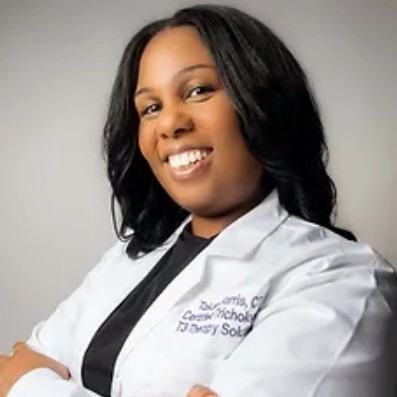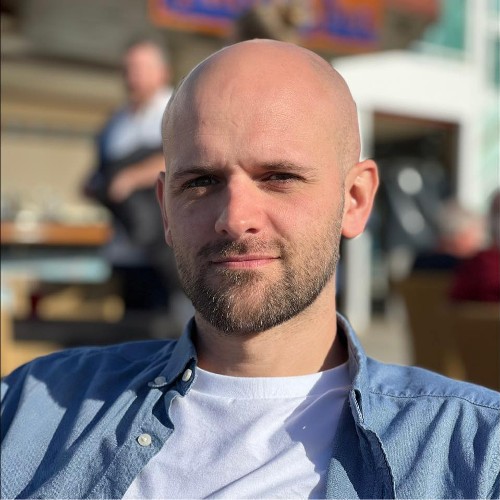Being bald on top with hair on the sides of your head can be a challenging style to pull off.
As someone who’s navigated these waters for over two decades, I understand the mix of emotions and questions it brings. This guide is dedicated to men who want to approach the situation with style and confidence.
We’ll explore hairstyles, discuss scalp care, and address the options for those who aren’t ready to simply accept that their days of having hair on top are behind them.
Key Takeaways:
- The choice is yours: You can shave your head, or embrace baldness and keep the sides longer
- You have more styling options than you think: These include the double fade, brushed sides, and accessorizing with facial hair.
- The combover is out! This style betrays a lack of confidence and an unwillingness to accept your hair loss.
What is ‘Horseshoe Hair’?
‘Horseshoe hair’ is a distinctive balding pattern where the gentleman experiences full hair loss on the top of the head. A band of hair remains along the sides and back, forming a horseshoe-like shape. This pattern is a common form of male pattern baldness.
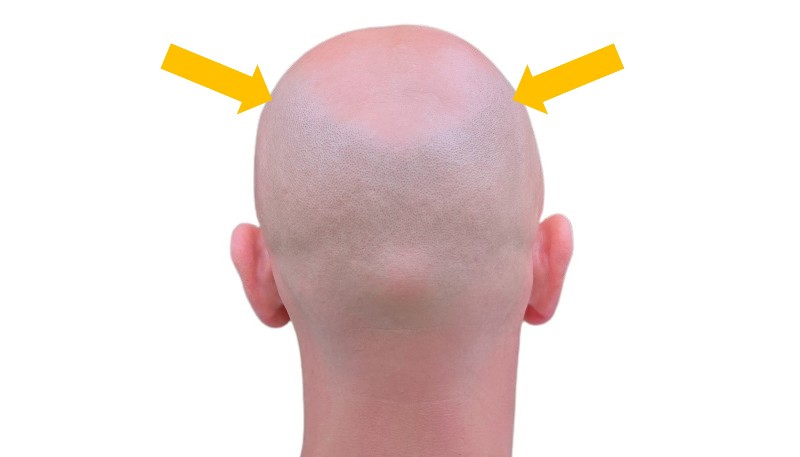
This look goes by many names, including the more amusing nicknames like ‘Power Donut’ and the less flattering ‘Toilet Seat’!
Not every man who goes bald will reach this level of hair loss. On the Hamilton-Norwood scale, the horseshoe is stage 7, the final level of hair loss. However, there are several steps before this where your hair can settle without ever reaching a Norwood 7:
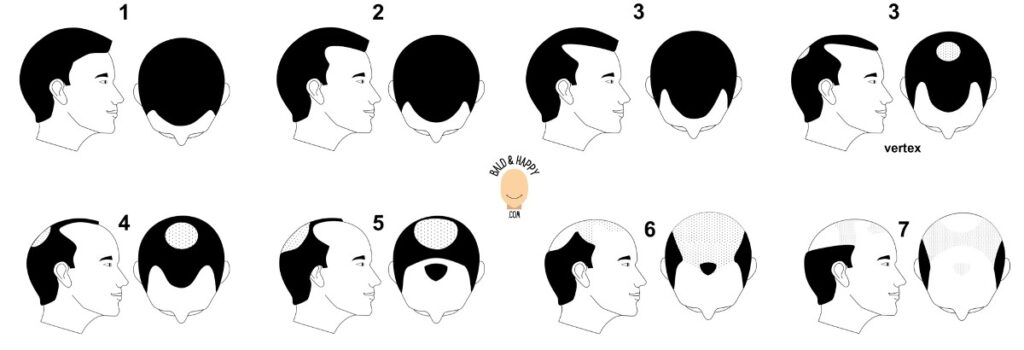
As you can see above, the first stage of hair loss is a Norwood 2, and you can see examples of Norwood 2 hairlines here.
Arguably, Norwood 6 also shows a bald crown with side growth, and could also be referred to as vaguely horseshoe-shaped. But generally, people think of a Norwood 7 when referring to a full-blown horseshoe.
Understanding the causes of this hair pattern can empower anyone experiencing it to embrace their unique look with confidence. You’ll also be able to make more informed decisions about styling, treatment, and personal grooming.
Causes – genetic and hormonal factors
Genetic factors are the main causes of the horseshoe hair pattern. Male pattern baldness, also known as androgenetic alopecia, is often inherited and can start affecting men from their late teens to early adulthood.
This is influenced by androgens, which are male hormones. Dihydrotestosterone (DHT), a derivative of testosterone, is the main cause of hair loss. It shortens the growth phase of hair follicles, eventually leading to thinner hair and a receding hairline, culminating in the horseshoe pattern.
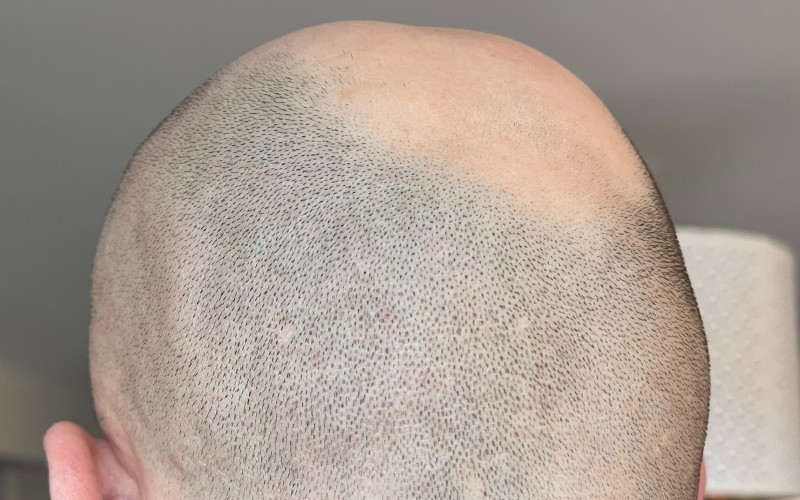
If you’re reading this, you might already know that baldness doesn’t simply skip a generation, as you might have been led to believe. While baldness genes can be inherited from parents, the popular belief that baldness always skips a generation is a myth, as the genetic inheritance of hair loss is more complex and not governed by a set rule.
Hormonal imbalances can also play a role. Besides genetic predisposition, factors like stress, diet, and certain medical conditions can influence the severity and progression of hair loss.
Dr. Takara Harris, Certified Trichologist at Restored Crown Hair Restoration Clinic, says, ‘In my practice, prevalent misconceptions often revolve around the belief that hair loss exclusively affects older men and is solely determined by genetics.’
Dr Harris explains that while genes are important, there are other types of hair loss too:

‘It’s crucial for men to understand that the process begins in the gut, and despite genetic predispositions, dietary choices can significantly impact the outcome.’
Dr Harris also mentions, ‘A man can simultaneously experience two types of alopecia – genetic and deficiency-related.’ Besides genes, Dr. Harris points out that ‘stress, diet, and certain medical conditions can influence the severity and progression of hair loss.’ She stresses to patients that ‘commencing treatment sooner rather than later is key for optimal results.’
Historical popularity and examples
Several historical figures have rocked the horseshoe hair pattern, which has had periods of wild popularity. In some eras, it was a common and accepted part of aging for men, while in others, it became a signature look associated with wisdom and distinction.
For instance, in the Renaissance period, this pattern was often seen in scholars and philosophers, signifying maturity and intelligence.
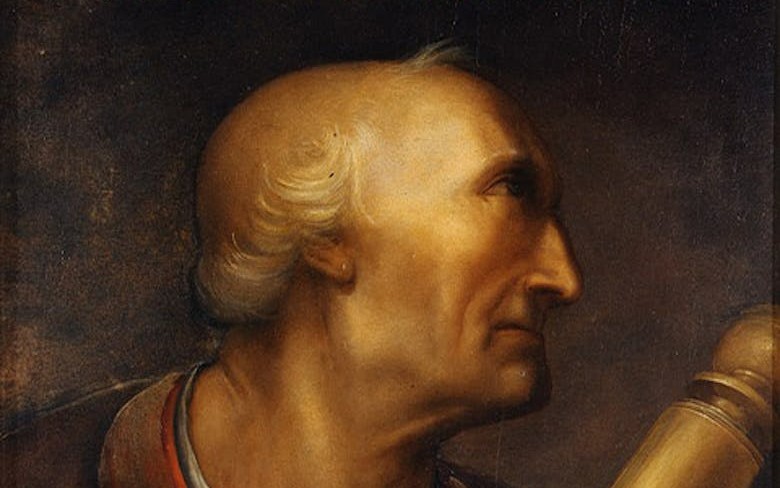
In more modern times, several celebrities and public figures have embraced this look.
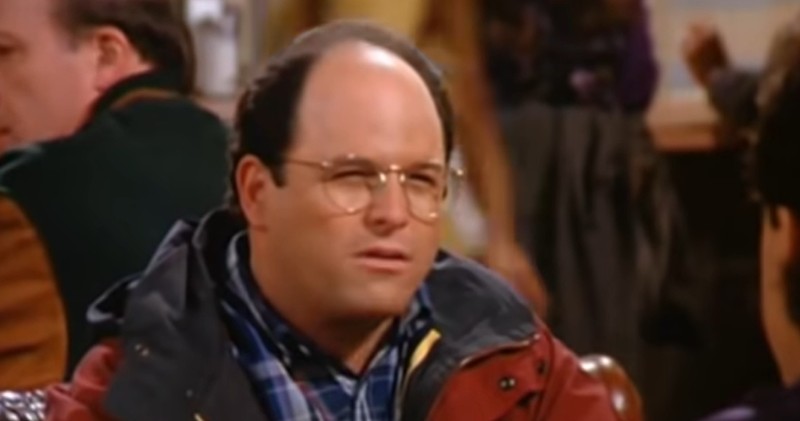
Cherished public figures like Jason Alexander and Ron Howard carry the style with confidence, positively influencing how men who decide not to shave the back and sides of their hair short are perceived.
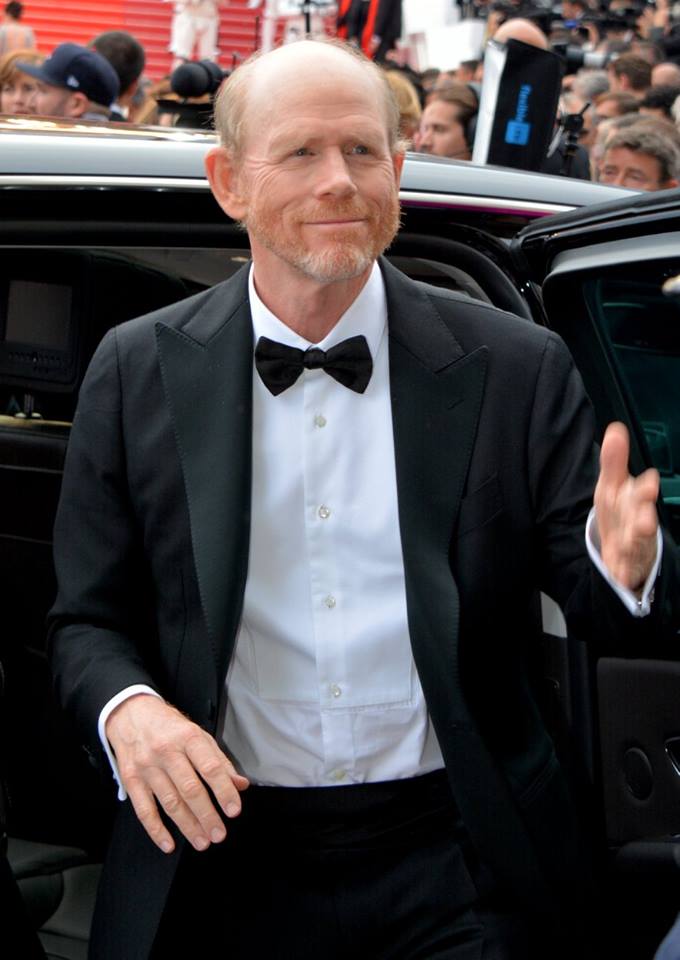
The horseshoe hair pattern has also been a subject of interest in art and media, often used to depict characters with a certain level of gravitas or experience. This depiction reflects the societal attitudes towards aging and masculinity.
Hairstyling Options
1. Embracing baldness – the horseshoe
Accepting your hairless future and simply wearing the hair at the back and sides a little longer is the most practical choice.
French actor Christophe Canard and his power donut
byu/Doubarakau inPowerDonut
This low-maintenance option simplifies your grooming routine, as you won’t have to shave every few days to keep the hair at the back and sides trimmed down.
However, it can also be a powerful personal statement. If you’re confident enough to let people see your natural look, you’re showing the world that you’re comfortable in your own skin and that other people’s opinions aren’t going to define your style.
2. Shaving your head
Most people’s advice is to shave your head when you start to lose your hair.
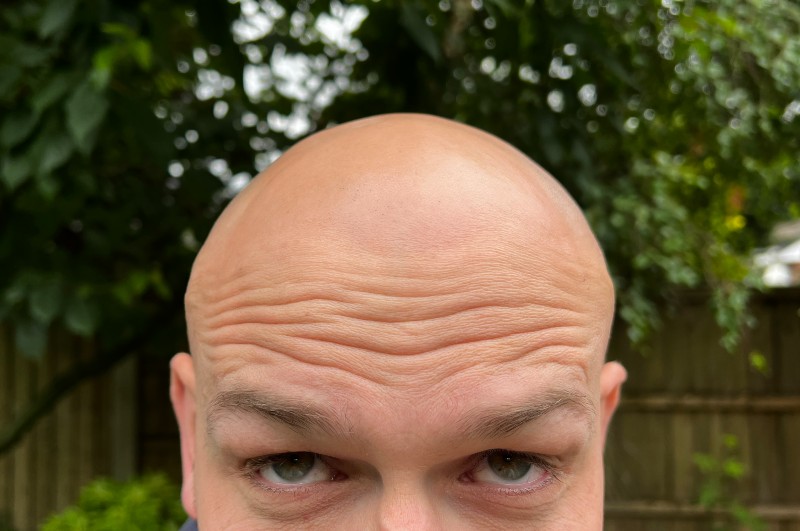
Even though this is the route I went down, it’s not always the right thing to do for everyone, so firstly, make sure you’ve weighed up your options before you commit:
If you’ve considered all the alternatives and still decided to brave the shave, then more power to you! Your next decision is whether to use a razor or electric shaver to shave your head.
Razor
When I surveyed the bald community, 69% of men said they prefer to use a razor to shave their head:

The main reason to use a razor is how close it shaves your head. The advantage here is that it makes the contrast of the hair on the sides of your head less visible against the bald area on top. If, like me, you’re self-conscious about how noticeable that change is, a razor is the way to go.
However, there are other factors to consider when deciding to use a razor:
| Pros | Cons |
|---|---|
| ✅ Gets the closest shave possible | ❌ Can be harsher on the skin, potentially causing cuts, razor bumps, and irritation, especially around the back of the neck |
| ✅ Allows for a smoother finish, with less visible shadow where hair stops | ❌ Requires more preparation like wetting the scalp and applying shaving foam or gel |
Razor bumps, cuts, and irritation can be a real problem and there is a learning curve when you start to shave with a razor. Here are my tips on how to get the perfect head shave with a razor.
Tips for shaving your head with a razor
- Buzz hair short if needed – a razor won’t shave long hair
- Shave in the shower hot water softens pores
- Cleanse and exfoliate your scalp
- Apply pre-shave oil (optional, but improves razor glide)
- Use shaving cream
- Shave with the grain first
- Use long, slow strokes
- Take care around your ears
- Use your free hand as a guide on the back of your head
- Check for any spots you’ve missed
- Moisturize your scalp post-shave
I enjoy the maintenance side; experimenting with new products and perfecting my head-shaving routine. But it can be time-consuming and it’s not for everyone.
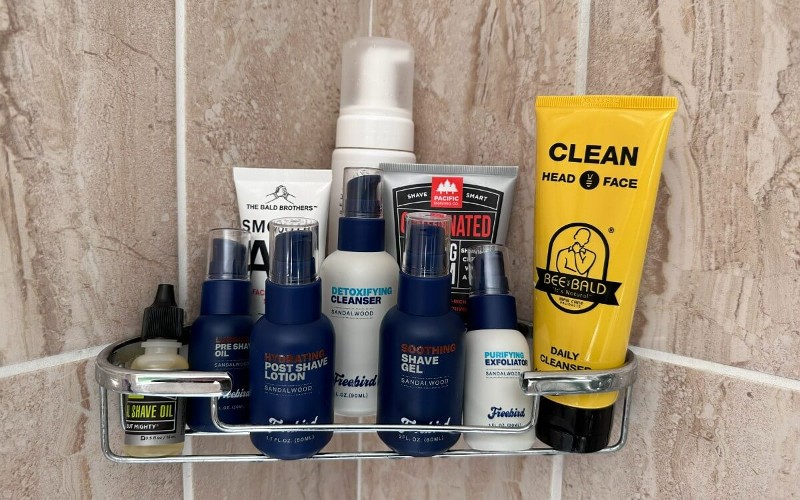
This is why the electric alternative exists:
Electric head shaver
Every bald man should have a head shaver around the house for those times when you don’t have time for the full wet shave routine.
But lots of bald guys prefer using a head shaver to shave their heads. 31% of men surveyed said they’d opt for the convenience and safety of a head shaver over a razor every time.
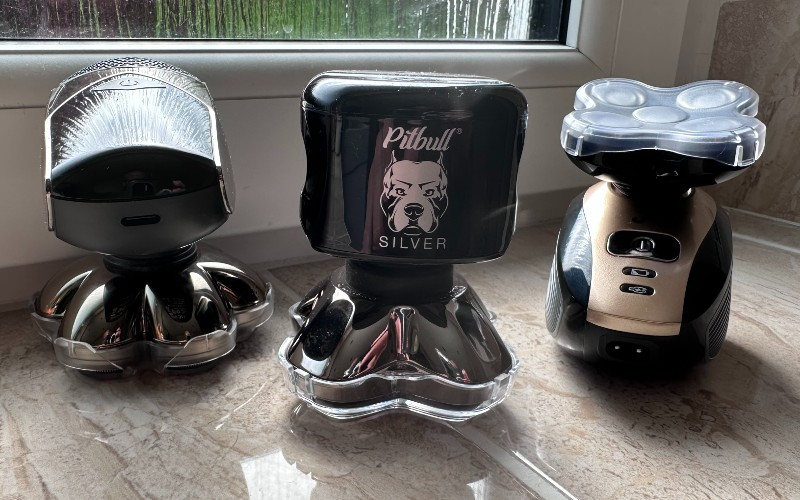
And many head shavers are waterproof anyway, which means you can still use some models in the shower for that unmistakable wet shave experience!
| Pros | Cons |
|---|---|
| ✅ Faster and more convenient, with no need for wetting the scalp or applying shaving foam or gel | ❌ Doesn’t cut as close as a manual razor, potentially leaving a more visible shadow |
| ✅ Better for sensitive skin, less likely to cause irritation and redness | ❌ Can still cause irritation if not properly maintained or if low on charge |
| ✅ Often waterproof, allowing for use in the shower | |
| ✅ Specifically designed models available for ease of use on the scalp |
I’ve used and tested lots of head shavers to see which is the best on the market. I still prefer the closeness of a razor, but when I’m short on time or feeling lazy, I’ll grab my electric shaver and in two minutes I’m ready to go.
I always pay particular attention to the horseshoe area to reduce the contrast between the remaining hair on the back and sides, and the bald area on top:
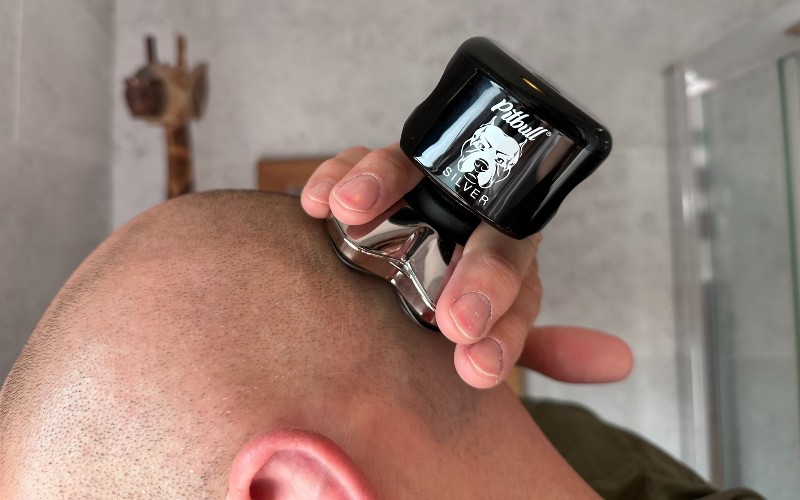
Tips for shaving your head with an electric head shaver:
- Make sure your shaver has enough charge, but cycle the battery by letting it drop below 20% before charging. This will extend the life of your shaver.
- Start with clean, dry hair – wet hair can clog the shaver.
- Begin shaving from the front of your head and move towards the back in smooth, steady strokes.
- If you’re using a rotary shaver, use a circular motion. With a foil shaver, shave in straight lines up and down.
- Use your free hand to stretch the skin slightly, making it easier to shave closely.
- Shave against the direction of hair growth for a closer cut.
- Pay extra attention when shaving around tricky or sensitive areas like the ears and the back of the neck.
- Regularly clean the shaver head to remove hair and skin particles. Check the manufacturer’s instructions for cleaning and maintenance advice.
- After shaving, rinse your head with cool water to close the pores, then apply a moisturizer to soothe the skin.
- Maintain your shaver by regularly oiling the blades and replacing them as needed.
3. What about a combover?
There’s not much to say here. A combover just isn’t a good idea.
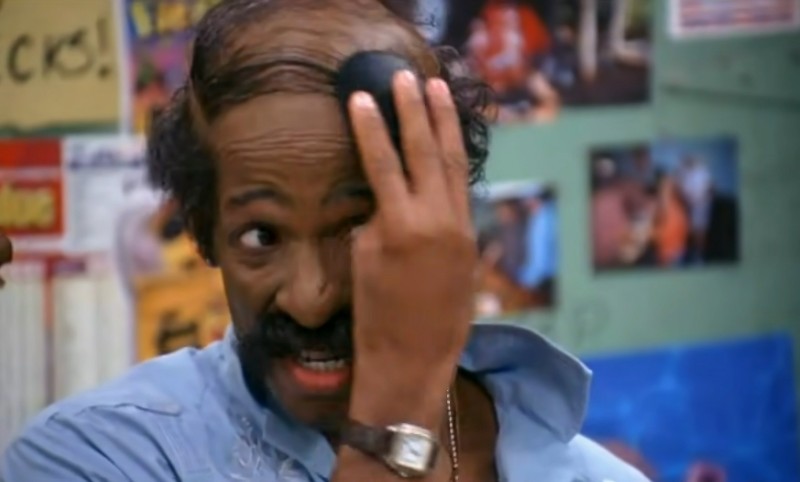
You’re not fooling anyone into thinking you still have a full head of hair, and one rogue gust of wind will quite literally ‘blow’ your cover.
This style, which is characterized by growing hair longer on one side and then sweeping it over the bald area, actually does the opposite of what it sets out to achieve. Far from creating the illusion of a full head of hair, a combover draws more attention to the thinning areas.
By wearing a combover, you’re signaling a massive lack of confidence and unwillingness to accept your hair loss.
Also, keeping a combover in place is a real challenge. It needs a lot of styling and care, which isn’t practical for everyday life. A bit of wind, or even you moving your head quickly, can mess it up.
Constantly worrying about people noticing your combover, or whether it’s still in place, will destroy your confidence. Instead, pick a hairstyle that’s practical based on the hair you have left. Aim to be real and accept the hand you’ve been dealt. This will make you feel, and appear, much more confident.
4. Salt & pepper sides – embrace the gray
I can’t tell you how delighted I am that gray hairs have started sporting in my beard. If I had a choice, I’d go gray over going bald any day, but I was destined to be a baldie, not a silver fox.
If you’re lucky enough to have some distinguished gray mixed in with the darker hairs around the sides of your bald head, my advice is to embrace the ‘salt-and-pepper sides’ look. Here are three options to take advantage of your salt-and-pepper sides:
- Show off the gray: If you still have some natural color in your hair, keeping it a little longer around the sides is a bold choice to showcase your salt-and-pepper look
- Shave sides short: A buzz-cut keeps the sides of your hair short and neat while making both the gray and dark hair visible
- Add a Beard: Complement the salt-and-pepper sides with a beard to allow more gray to show through and upgrade the overall look
Other styling options
Once you’ve eliminated the combover as an option, you might think your two choices are to grow out the sides or shave them down.
But there are other ways to wear the ‘bald on top, hair on sides’ look:
The natural look
Lots of older gentlemen simply accept baldness and won’t add unnecessary effort to their day by shaving and grooming.
They rock a sparse combover or tufts of remaining hair, and say ‘To hell with what anyone else thinks’.
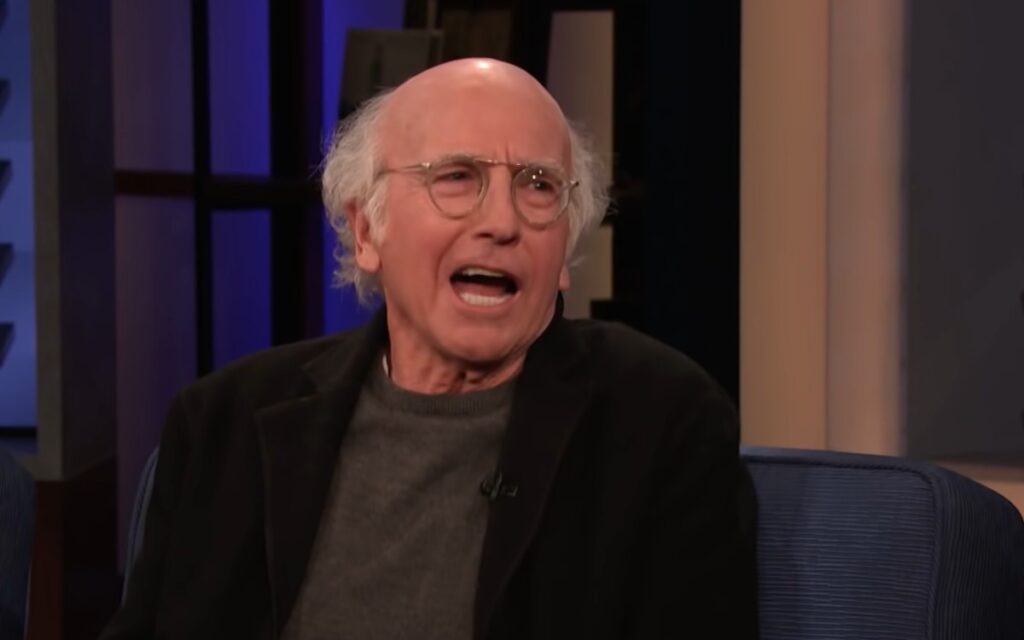
It’s not the look for me, but you have to admire the confidence.
The double-fade
This one needs the help of a professional barber, but I actually love the look.
It involves the standard skin above the ears, with the hair at the sides tapering gradually longer into the middle of the horseshoe.
Then a second fade is added at the top of the horseshoe to avoid the harsh stop where the hair suddenly disappears on top.
This style was showcased in a video by the excellent Baldcafe on YouTube:
Thick sides and mustache
This style is all about embracing what you’ve got left on the sides and pairing it with a statement mustache. You don’t have much on top, but you’ve still got plenty to work with above the lip.
Don’t be afraid of the horseshoe. Embrace it. You don’t have to shave!
byu/JuMeTrEt inbald
A thick, well-groomed mustache is stylish and draws the eye. I can’t make it work for me, but I’d encourage anyone who is a little more fashion-confident to give it a go!
Brushed sides
Brushing the sides of your remaining hair neatly gives a tidy, well-kept look that is simple, clean, and low maintenance.
This is for the gentleman who has decided to keep the sides longer but also wants to keep it classy.
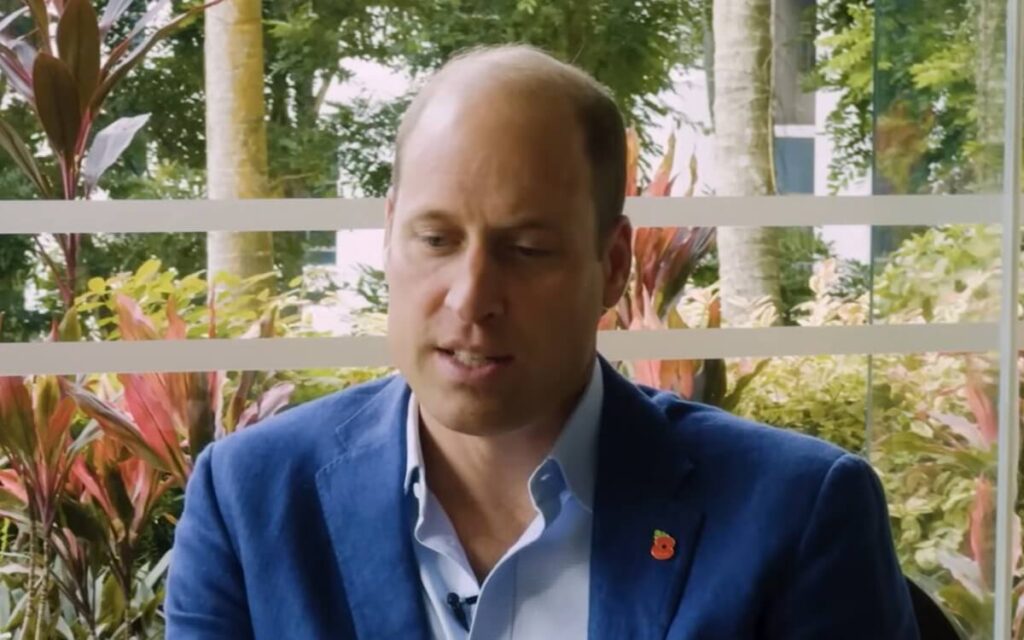
Personally, I’d be too conscious of the contrast between the hair at the back and sides vs. the complete baldness on top. But if you’d rather highlight that contrast, this is a respectable way to do so, especially in a professional workplace setting.
Long sides and beard
If you want length on the sides, why not pair it with a full beard?
This combo works great for creating a rugged, masculine look. Take what nature gives you and work with it.
I’m currently rocking a full beard, but instead of leaving the sides long I go for a full razor shave and blend my facial hair into my bald scalp.
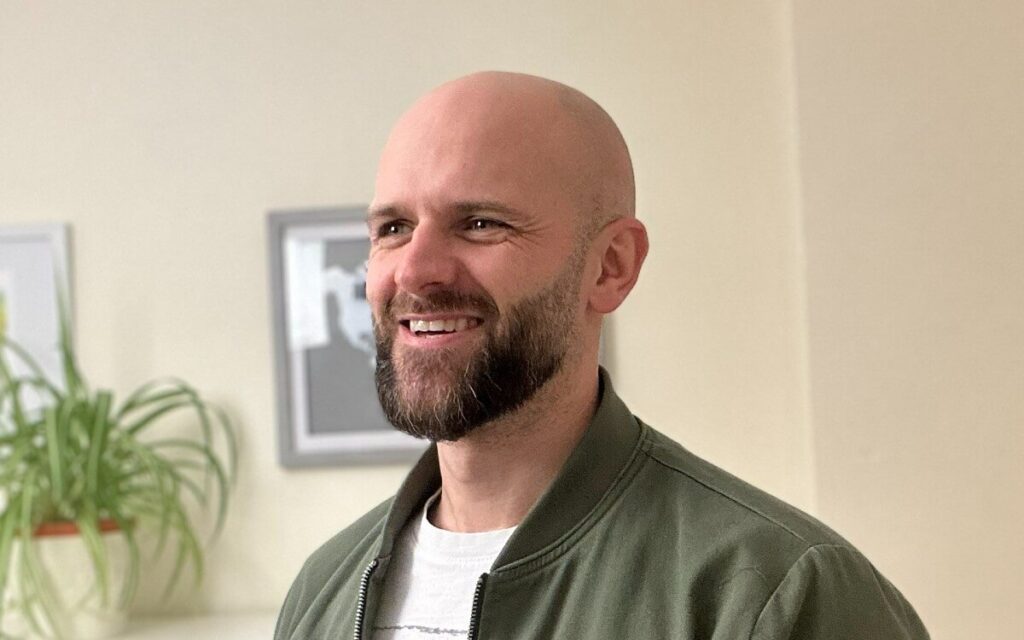
However, this demands regular grooming and I admire the confidence of anyone willing to leave it natural.
Comb-back
The comb-back is a sleek, more refined option. It works well if you’ve still got some hair on the top, however sparse.
Just comb the hair back for a smooth, clean look. It’s a bit more polished and requires a minimal amount of maintenance.
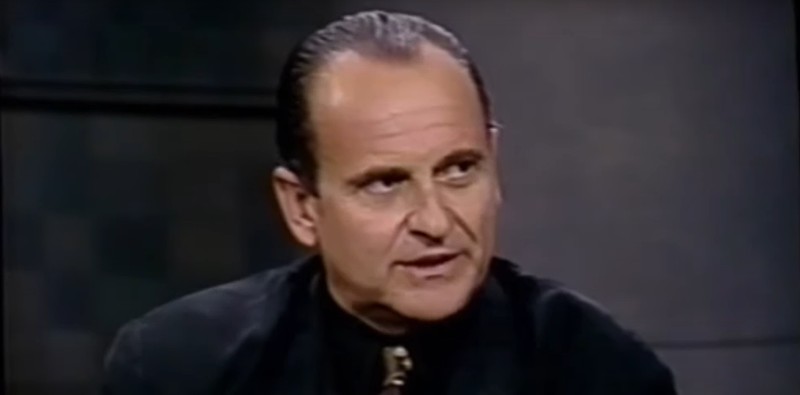
This crisp, put-together look is for the man who is confident enough to keep his hair longer despite serious levels of balding on top. I can see its appeal, although my hair loss is so advanced that it’s not an option for me!
FAQs
Being bald on top is known as ‘crown balding’ and is the most common forms of Male Pattern Baldness. When bald men keep the hair on the back and sides of their head, the hairstyle is called a ‘horseshoe’ because of the shape the hair makes.
Balding men keep hair on the sides because the hormone that causes baldness (DHT) doesn’t affect the sides of the head in the same way. Some balding men keep hair on the sides longer because they either don’t want to shave it off, or they like the look.
To hide baldness on top of your head you can shave your head head so it matches and looks like it’s a deliberate choice. You could also use hair fibers, look into a hair transplant, or consider SMP (a hair tattoo) if you’re happy to keep it shaved down.
Choosing a fade or an undercut can draw attention away from the thinning areas. Strategic styling, such as a swept-over part or textured volume, can disguise the horseshoe pattern to a point, but it will still be noticeable, and shaving your head is usually the best option.
The frequency of head shaving can vary. Some bald guys prefer a fresh shave every couple of days, while others may wait a week. It depends on personal hair growth speed and how smooth you prefer your scalp to feel.
A well-groomed full beard or a carefully shaped goatee can balance the facial proportions with a bald top. You don’t need a full, thick beard either – stubble can add texture and character and suits certain face shapes better.
While genetics primarily determine hair loss, lifestyle factors such as diet, stress management, and scalp care can influence hair health. A balanced diet rich in vitamins and minerals supports healthier hair, but won’t necessarily reverse balding.
Summary
Whether you shave your remaining hair down or go for one of the more creative styles is down to your individual level of confidence.
I’ll admit, it’s a lot easier to shave your head and ‘disguise’ the contrast between the hair on the sides of my head and the complete lack of it on top.
I want my head to look as ‘even’ as possible, so I shave with a razor every 2-3 days to stop the darker stubble from becoming too visible. The pattern of my Male Pattern Baldness isn’t something I like people to see, and I enjoy the maintenance and grooming element.
But if that sounds a little too boring for you, there are probably more styling options described above than you might have realized. I hope you find the right look for you – leave a comment and let me know how you wear the hair around the back and sides of your bald head.

